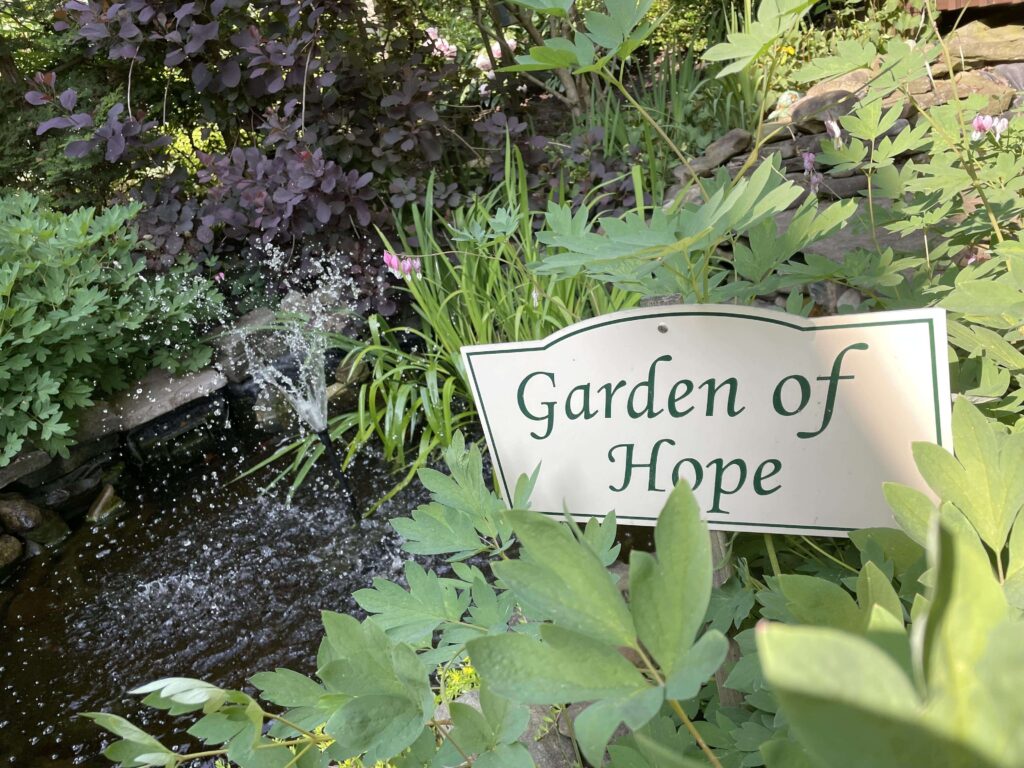Garden of Hope
The Garden of Hope is the first major garden undertaking at the Iris Respite House. The garden was designed and built by Lisa and her son Charles Jr., as they were healing from the loss of Lisa’s father; the result was a restored sense of hope.
This garden is a sensory garden with the environment designed to stimulate all of the senses. With many plants and materials throughout this garden, senses are engaged in different ways during the four changing seasons. Even the frozen-over pond takes on an intriguing quality during the winter season. There is always a plant or two being moved to another environment for a stronger life support, dying because its life cycle has been complete, or being added for a new beginning. The bridge over the pond is a 2017 addition.
Herbs, viburnum, wisteria and roses entice the senses through smell and taste, while the rushing water and wind chimes provide a distraction from every day noise. The many textures of plants embark on the sense of touch, whether it is spikey, smooth, soft or rough. The many different colors of the flowers throughout the seasons touch upon the harmony and beauty of the one viewing the garden.
A sense of tranquility and peace occurs while in this garden. The Japanese maple, which is the focal point of the entrance to the house, symbolizes peace. The goldfish symbolize good luck in the form of tranquility, wisdom and long life. The name of the garden was chosen as a reminder that belief in hope lets us know that everything will be alright tomorrow, even though we have no proof of that.




Healing & Restorative Properties
Sensory gardens are designed to stimulate the senses. The use of the materials and plants are arranged in a way to engage the five senses and the elements of the garden can create an emotional response. The mindful and positive outcome is one of being more present in the moment, more positive and evoke a sense of calm and happiness.
Suggested Therapeutic Activity
Sound: Sit on the front porch, close your eyes and listen to the sound of water and other sounds in nature.
Touch: Walk through the garden and touch several of the plants.
Sight: Be still, stand or sit somewhere and allow your eyes to look at all the plants, trees, hardscaping and pond without judgment. Doing this without judgment allows for our intuition to shine.
Volunteer Schedule
The garden effort on a yearly basis is approximately 20 hours during the spring into fall seasons. Once every 2 weeks for about 1-2 hours is an appropriate time frame for support that is needed.
Seasonal Maintenance Description
Raking and cleaning from winter, weeding, mulching, fertilizing and pruning throughout the season. Pest and deer control applications and pond maintenance (water/electric/algae control).
Adopt the Garden
Cost: $2,500 yearly
Signage with name/company name will be in placed in the garden for one year.












